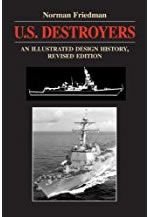USS Clemson (APD-31),
Charleston, 1944
|
|
USS Clemson (DD-186/ AVP-17/ AVD-4/ APD-31) was the name ship of the Clemson class of destroyers. She entered service too late for the First World War, but had a varied career during the Second World War, serving as aircraft tender, a destroyer with an anti-submarine group and a fast transport.
The Clemson was named after Henry A. Clemson, a US Navy midshipman who drowned when the USS Somers capsized off Veracruz during the Mexican War.
The Clemson was launched at Newport News on 5 September 1918, but wasn’t commissioned until 29 December 1919. She had a very short active career that took her along the US East Coast and to Cuban waters, but that ended after only six months when she was placed into the reserve with a half complement at Norfolk on 13 June 1920. Over the next two years she moved to Charleston, then to Boston, then to Philadelphia, where she was decommissioned on 30 June 1922.
On 15 November 1939 she was reclassified as an ‘aircraft tender, small’, as AVP-17. She was modified to carry out her new role, and was recommissioned on 12 July 1940. On 6 August she was reclassified as AVD-4, with AVD standing for ‘aircraft tender, destroyer’. The Clemson then joined the Scouting Force of the Atlantic Fleet at Norfolk on 18 August, and she spent the next few months operating with patrol aircraft in the Caribbean and the Galapagos Islands. This lasted until 28 November 1941 when she departed for Brazil, where she remained until 22 January 1942. The rest of 1942 was spent supporting patrol aircraft from Recife and the Caribbean.
On 2 March 1943 the Clemson returned to Norfolk, ready to be converted back into a destroyer. The work was carried out quickly, and on 30 May she joined the early anti-submarine hunter-killer group based around the escort carrier USS Bogue (CVE-9). The Clemson served with the Bogue’s group for most of 1943, taking part in eight patrols during which eight U-boats were sunk. The Clemson herself was given a share in the credit for sinking U-172 on 13 December 1943. The Clemson was awarded a Presidental Unit Citation covering 12 July-23 August 1943 and 14 November-29 December 1943. Late in this period she was reclassified as DD-186.
From 25 January-9 March 1944 the Clemson escorted a convoy from New York to Casablanca and back. She then went into the Charleston Navy Yard to be converted into a fast transport. She was reclassified as APD-31 on 7 March 1943. Two months later, on 1 May 1944, she departed from Charleston heading for the Pacific. She reached Pearl Harbor on 24 May where she picked up Underwater Demolition Team 6. She supported this unit during the invasions of Saipan, Guam, Peleliu, Leyte and Lingayen Gulf.
On the night of 3 October 1944, while she was moored at Manus, a fire broke out onboard, and spread to the nearby Stringham (DD-83/APD-6), setting fire to her Underwater Demolition Team's boats and explosives.
On 5 January 1945, during the fighting in Lingayen Gulf, she helped drive off a Japanese air attack.
After leaving the Gulf she then escorted a convoy to Ulithi. On 5 April 1945 she left Ulithi to escort a convoy to Okinawa, arriving on 10 April. She then returned to San Pedro, California, arriving on 6 July 1945.
In May 1945 she was part of Transport Division 101.
After her return to the United States work began on re-converting her into a destroyer. She was redesignated as DD-186 for the second time on 17 July, but the work wasn’t complete when the war ended. The project was then cancelled, and she was decommissioned on 12 October 1945, before being sold for scrap on 21 November 1946.
The Clemson received nine battle stars during the Second World War, three for service with the Bogue's task groups, one for U-175, and for Saipan and Guam, the southern Palaus, Leyte, Lingayen Gulf and Okinawa.
Displacement (standard) |
1,190t |
Displacement (loaded) |
1,308t |
Top Speed |
35kts |
Engine |
2-shaft Westinghouse geared tubines |
Range |
2,500nm at 20kts (design) |
Armour - belt |
|
- deck |
|
Length |
314ft 4in |
Width |
30ft 10.5in |
Armaments |
Four 4in/ 50 guns |
Crew complement |
114 |
Launched |
5 September 1918 |
Commissioned |
29 December 1919 |
Decommissioned |
12 October 1945 |
 U.S. Destroyers: An Illustrated Design History, Norman Friedmann .
The standard history of the development of American destroyers, from the earliest torpedo boat destroyers to the post-war fleet, and covering the massive classes of destroyers built for both World Wars. Gives the reader a good understanding of the debates that surrounded each class of destroyer and led to their individual features.
U.S. Destroyers: An Illustrated Design History, Norman Friedmann .
The standard history of the development of American destroyers, from the earliest torpedo boat destroyers to the post-war fleet, and covering the massive classes of destroyers built for both World Wars. Gives the reader a good understanding of the debates that surrounded each class of destroyer and led to their individual features.